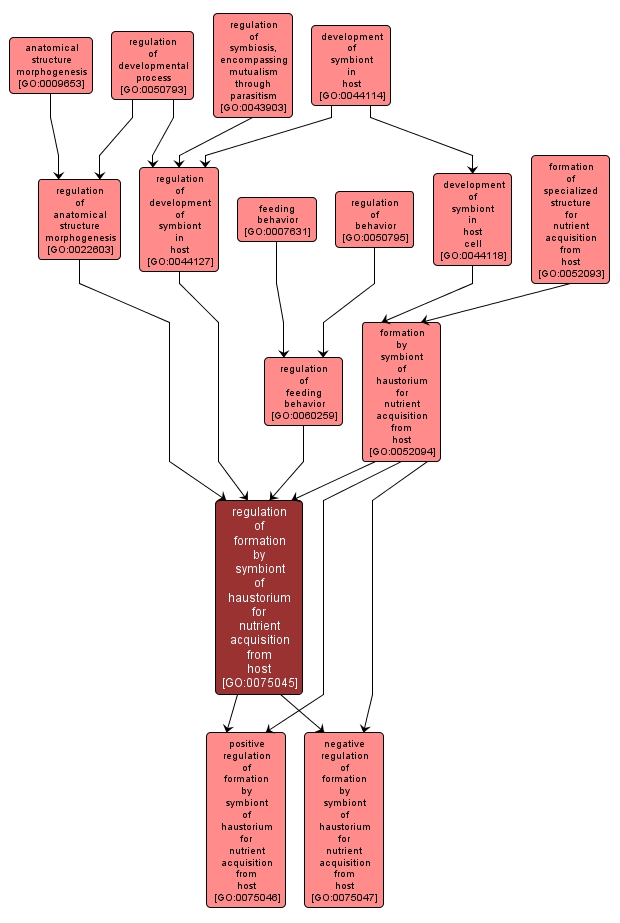GO TERM SUMMARY
|
| Name: |
regulation of formation by symbiont of haustorium for nutrient acquisition from host |
| Acc: |
GO:0075045 |
| Aspect: |
Biological Process |
| Desc: |
Any process that modulates the frequency, rate or extent of symbiont haustorium formation for nutrient acquisition from host. The host is defined as the larger of the organisms involved in a symbiotic interaction. |
|

|
INTERACTIVE GO GRAPH
|














